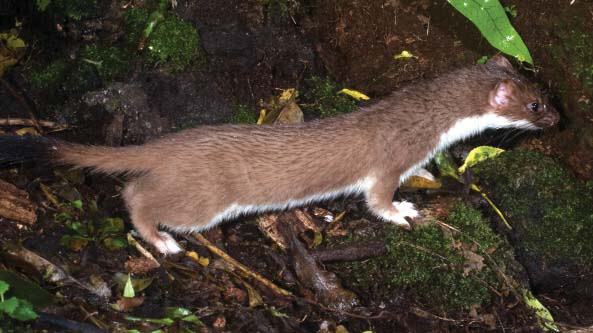 Stoats (and the smaller weasels) are best caught in a DOC200 trap: the larger ferrets require a DOC250.
Stoats (and the smaller weasels) are best caught in a DOC200 trap: the larger ferrets require a DOC250.
These are serious traps only used by the suitably trained. In general, DOC-series traps are only used in reserves in the Urban Ark area. If you are interested in learning how to handle a DOC200, or want to host one at your place, just get in touch.
Whats the best lure?
Stoats are wily customers who prefer catching live animals, so the better you can mimic that, the more likely you are to catch your stoat. But they’re suckers for fresh meat. Most of all, mix it up. If you’re not catching with your current lure, try something else.
Dried rabbit meat The staple of reserve trapping groups, this easy-to-handle compressed meat (such as the Erayz brand), come in chunks you tear off and leave in your trap. Easy to use but probably not as appealing as fresh meat.
Eggs Eggs act as a visual lure in DOC200 traps, and some people find that a ping pong ball or golf ball work almost as well as a real egg. If using a hen’s egg as lure, prick (with a pin) the top of the egg – to let the smell out – making sure the hole is upwards! Farm eggs (rather than washed store bought eggs) likely retain more chicken smells and are more appealing.
Fresh meat Fresh dripping meat is better than jerky. If you have a fresh dead rat, stick it in one of your stoat traps. They love it. But consider how frequently you can revisit the trap. Meat will it go off quickly in summer when it is best to use bigger chunks which don’t go off as quickly? People have also had good results with venison and rabbit meat.
Guts Some (admittedly not in suburban settings) advocate smearing the guts of something recently dead all around your DOC200 to really get the stoat salivating.
Egg mayonnaise Apparently it works well. Some advocate for organic mayo only.
Sardines Some have had success with tinned sardines.
Earth Scuff up the trap entrance each time you visit. The smell of freshly turned earth can be an attractant.
